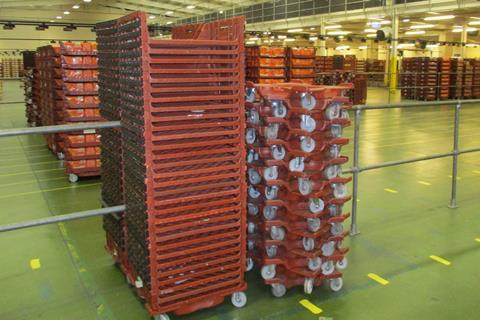Tag: reusable
Reusable Transport Packaging: Best Practices for Cleaning and Maintenance
Reducing waste and providing sustainable alternatives to single-use packaging, reusable transport packaging—including pallets, totes, containers, and crates—plays a vital part in modern supply chains. To maximize the lifetime of bread trays and preserve hygienic standards, however, these objects need constant cleaning and maintenance. Good maintenance of reusable packaging guarantees compliance and safety as well as improves performance and lifetime.
Regular Inspection and Damage Assessment
Examining reusable packaging for any damage—such as fractures, dents, or compromised structures—is crucial before washing. Frequent inspections enable the identification of possible hazards endangering the integrity of the package during transportation. Any broken objects should be fixed or replaced as once to guarantee safe handling and stop contamination.
Effective Cleaning Procedures
Reusable transport package cleaning techniques should be catered to the intended usage and the kind of material. For example, whereas timber pallets might need dry cleaning techniques to prevent moisture damage, plastic containers can usually be cleaned with water and mild detergents. Based on degree of pollution, one can use chemical sanitization, steam cleaning, or high-pressure washing.

Sanitization for Food and Pharmaceutical Packaging
Sanitization is absolutely vital for packaging used in delicate, food, pharmaceutical, or chemical sectors to avoid contamination. Items should be sterilized following cleaning using approved chemicals or heat treatments meant to eradicate viruses, bacteria, and other pathogens. It is imperative to make sure the sanitizing agents are fit for interaction with the particular materials.
Proper Drying and Storage
Correct drying is essential following cleaning and sanitation to avoid mold, mildew, and other moisture-related problems. The material will determine whether packing should be manually or air-dried. Store cleaned goods away from pollutants in a neat, dry, well-ventilated space as equally vital. Proper item stacking and cover usage as needed help to preserve their cleanliness until they are ready for use.
Maintenance and Repairs
Extending the lifetime of reusable transportable packaging depends mostly on constant maintenance. Among the regular maintenance chores are tightening loose components, changing outworn parts, and, if necessary, applying protective coatings. UV protectants can be used on plastic products to slow down sunlight-related breakdown.
Operational efficiency and safety in many different sectors depend on reusable transport packaging, such as bread trays, remaining clean and their integrity intact. Following best standards for inspection, cleaning, sanitization, drying, and maintenance helps companies maximize the lifetime of their packaging, lower expenses, and limit environmental effects. Modern logistics depends on proper care of reusable transport packaging since it guarantees compliance with hygienic criteria and promotes sustainability objectives.


















